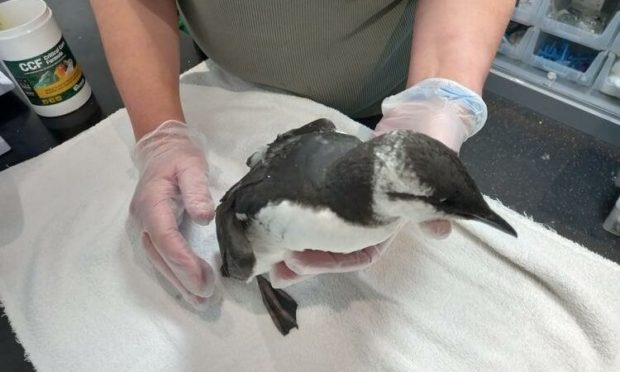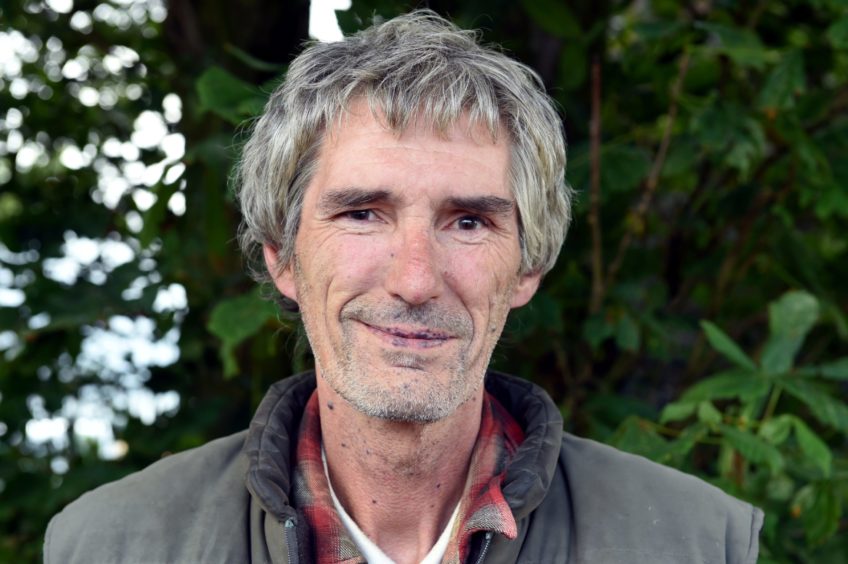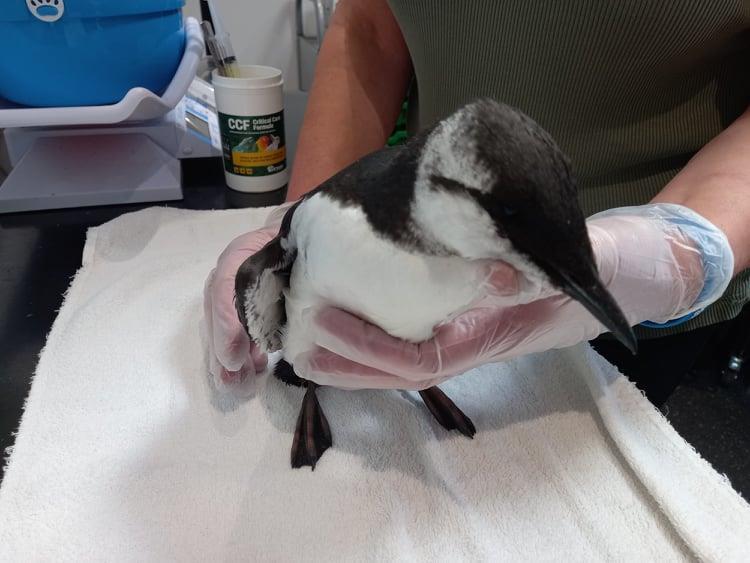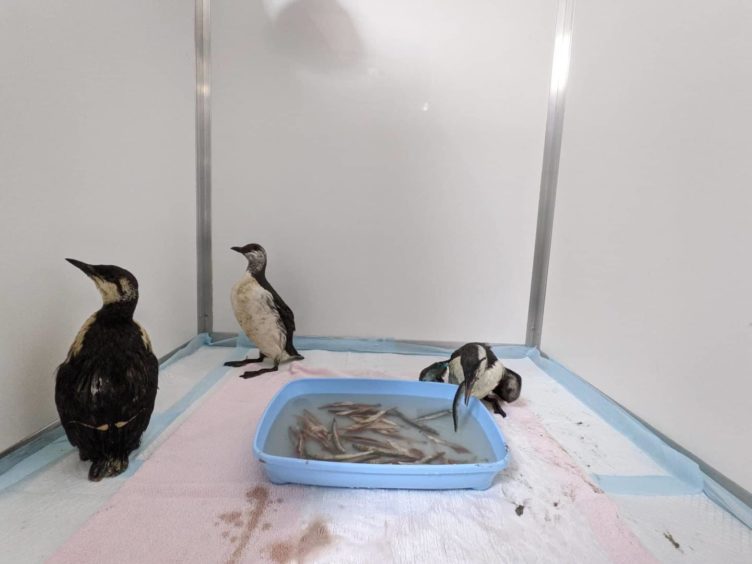Nearly 30 staving seabirds have been rescued from north-east beaches in the last month during an alarming period of increased bird deaths thought to be related to climate change.
The New Arc wildlife rescue centre north of Ellon took in just under 30 young guillemots, razorbills and puffins throughout August.
Every animal was severely emaciated.
Throughout August and September many walkers and wildlife watchers reported a great deal of seabirds washing up dead on beaches all along the east coast.
Keith Marley, who runs New Arc, said during a visit to Cruden Bay last week he counted almost 50 dead birds, including kittiwakes, in just one 15 minute walk where he also recovered two live, but hungry, guillemots.
What’s causing the deaths?
Although predation could have played a part in their deaths, because all of the animals that Mr Marley took in but sadly died were found to have nothing in their stomachs, Mr Marley believes the rise in seabirds washing up dead is due to a lack of food.
He argued that water temperature shifts caused by climate change can cause sand eels and other prey for young seabirds to dive deeper underwater, out of the reach of the fluffy youngsters who remain more buoyant than their parents until they get old enough.
Mr Marley said: “I have no doubt this is related to climate change driving their food down to deeper water as all of the birds we have examined post mortem have shown their stomachs to be completely empty.”
He continued: “There’s been a great number of puffins, guillemots and razorbills washed up, and a lot of kittiwakes too, which is surprising.
“The birds we’re having taken in for us are exhausted, underweight, and in very poor condition, and there’s been an unfortunately very low survival rate.
“When they come to land, they’re not just drifting into shore, they’re being smashed about by the waves and pounded into the sand and rocks, so a lot of them come in very damaged, and sadly unsavable.
“And keep in mind that what washes up on shore is only a small percentage of the number that actually die out there or get picked off.”
He continued: “A few years ago we saw something similar, but it wasn’t this extensive.
“A lot of the young birds leave the nests and go out and form rafts, gatherings of young birds, and occasionally you’ll have a raft washed in, usually due to storms.
“But this is happening all along the coast.”
RSPB ‘concerned’ about increasing deaths
Paul Walton, head of habitats and species for RSPB Scotland, said that it’s “often impossible” to directly pinpoint the cause of mass “die-offs”, but climate change can be a contributing factor.
He said: “Seabirds do on occasion die in numbers at sea and are washed ashore.
“The factors contributing to this are potentially many, sometimes including pollution or disease, but often a period of low food availability – small fish such as sand eels – is a factor.
“When this is combined with stormy weather, weakened birds can succumb and sometimes do so in large numbers.
“Whilst it is often impossible to pin individual events such as this down to specific causes, we know that climate change is implicated in reductions in seabird prey fish, and that it also leads to more unstable and stormy weather.
“The birds found in the Aberdeenshire area might not be direct climate change casualties, but we are concerned that events like this die-off are becoming more common around our coasts.
“As they do, we should all recognise the climate and nature emergency becoming more visible on our doorstep.”
What should I do if I come across a starving seabird?
Mr Marley said anyone in Aberdeenshire who happens upon a washed-up, starving seabird should carefully put it in a bag, and take it to the New Arc rescue centre.
He said: “If they find a live bird, give us a phone and get it to us as soon as you can.
“I’d recommend anyone walking on beaches just now to keep a bag with them.
“The birds aren’t going to be biting them, you may get a wee peck, but I’d suggest taking a towel ideally, or even a jacket or T-shirt, and carefully bundle them up into a bag and take them out to us.
“It is vital that they get attention as soon as possible. If people can get them to the New Arc we have the facilities, food and medication to treat them and hopefully get as many as we can returned to where they belong.”
New Arc is currently working to expand its seabird treatment facilities at the centre north of Ellon.
The charity is creating five new specialised pens capable of dealing with the increasing number of seabirds, ducks, and waders that it takes in every year.
Anyone wishing to contribute to New Arc’s fundraising efforts can phone 07962253867 or visit www.thenewarc.org




